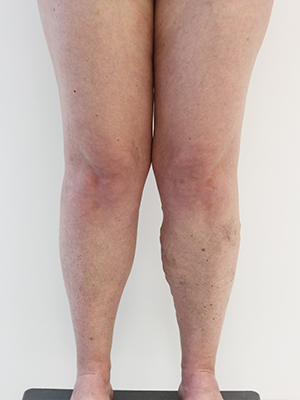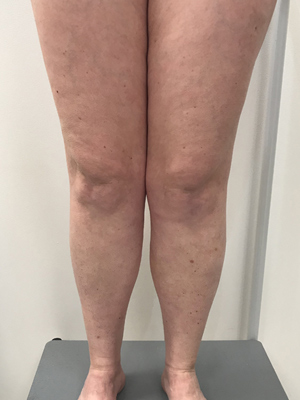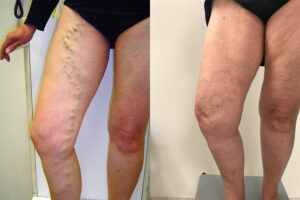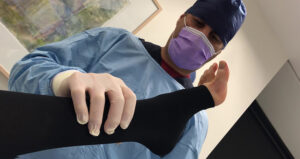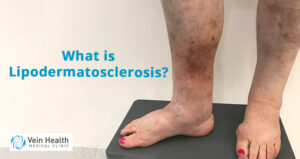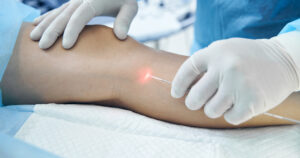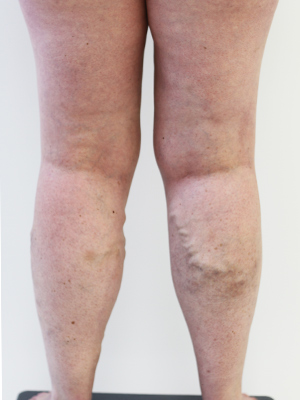
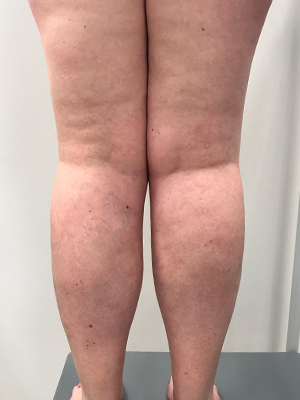
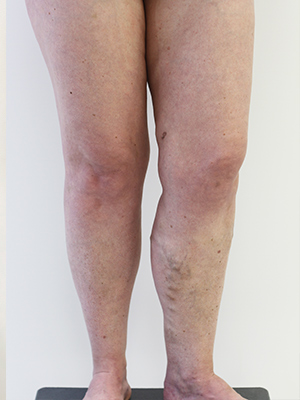
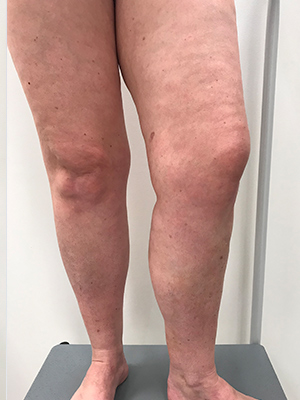
This 42-year-old mother of 3, presented 2 years ago with large and tortuous varicose veins that extended from the upper inner thigh into the lower inner leg. We took a comprehensive medical history of the patient. She revealed that the varicose veins would throb and feel uncomfortable and she was experiencing tiredness, restlessness, and night cramps in the leg.
The patient was not only concerned about the aesthetics of the varicose vein problem but the medical issues that could arise from it. She was primarily concerned about deep vein thrombosis and venous ulcers as she explained that her grandmother suffered from varicose veins and had both these serious complications.
Upon examination, the varicose veins in the left lower leg are quite obvious, but if you look carefully on the before photo, you will notice the significant hyperpigmentation (or haemosiderin staining) of the skin in the area of the varicose veins. After treatment, this hyperpigmentation will eventually disappear but may take anywhere between 12-24 months to do so, sometimes longer. When we performed a duplex ultrasound examination of the left lower leg, we found a 9mm great saphenous vein in the thigh that was incompetent and directly feeding the visible varicose veins. I explained that the great saphenous veins cause of most varicose vein disease and can only be diagnosed with duplex ultrasound.
During our discussion, I advised the patient that the most appropriate form of intervention is to use a combination of treatment methods performed concurrently and on follow up visits. These included EVLA (Endovenous Laser Ablation) to the large hidden vein, followed by UGS (Ultrasound Guided Sclerotherapy) to the visible veins, which were then removed by MAP (Modified Ambulatory Phlebectomy). Follow up of the patient occurred over 24 months and the post-treatment photographs were taken 23 months post-treatment. The leg will continue to improve aesthetically but the patient is already extremely happy with the overall relief of her symptoms. She no longer has pain or discomfort in the lower leg and has reported an increase in her exercise capacity.
